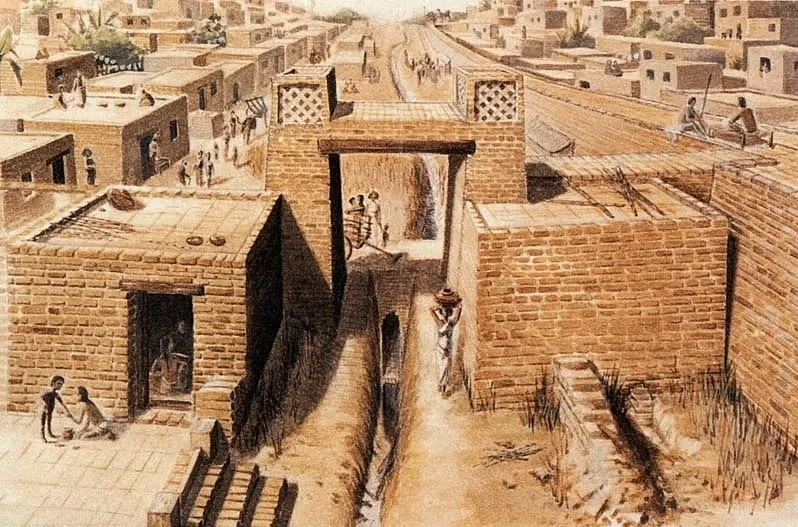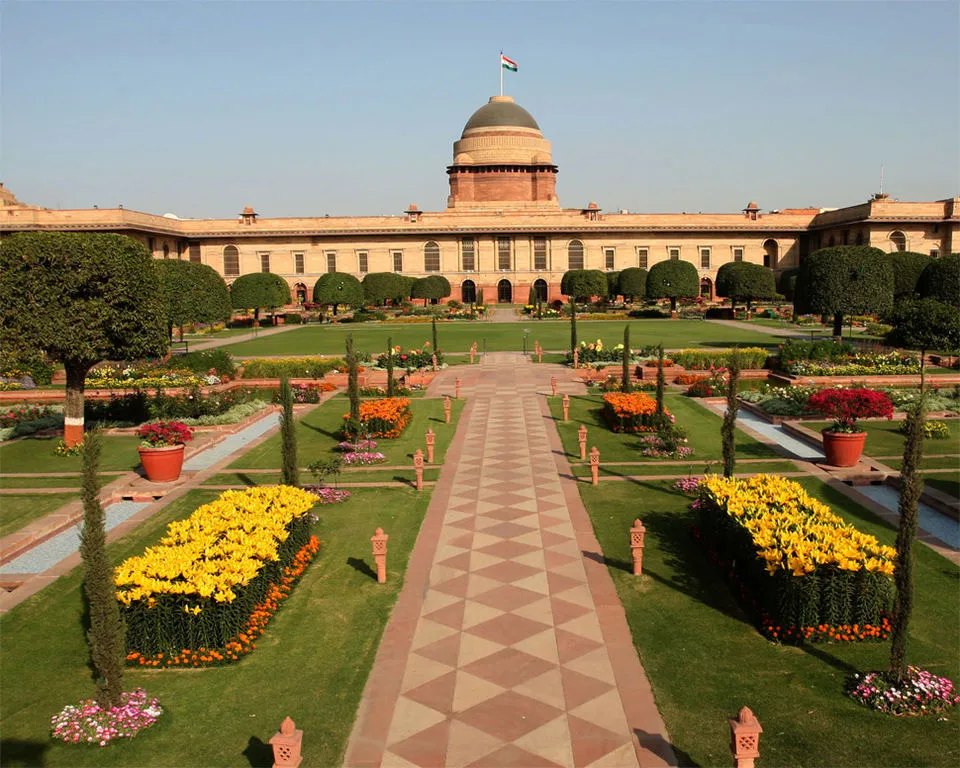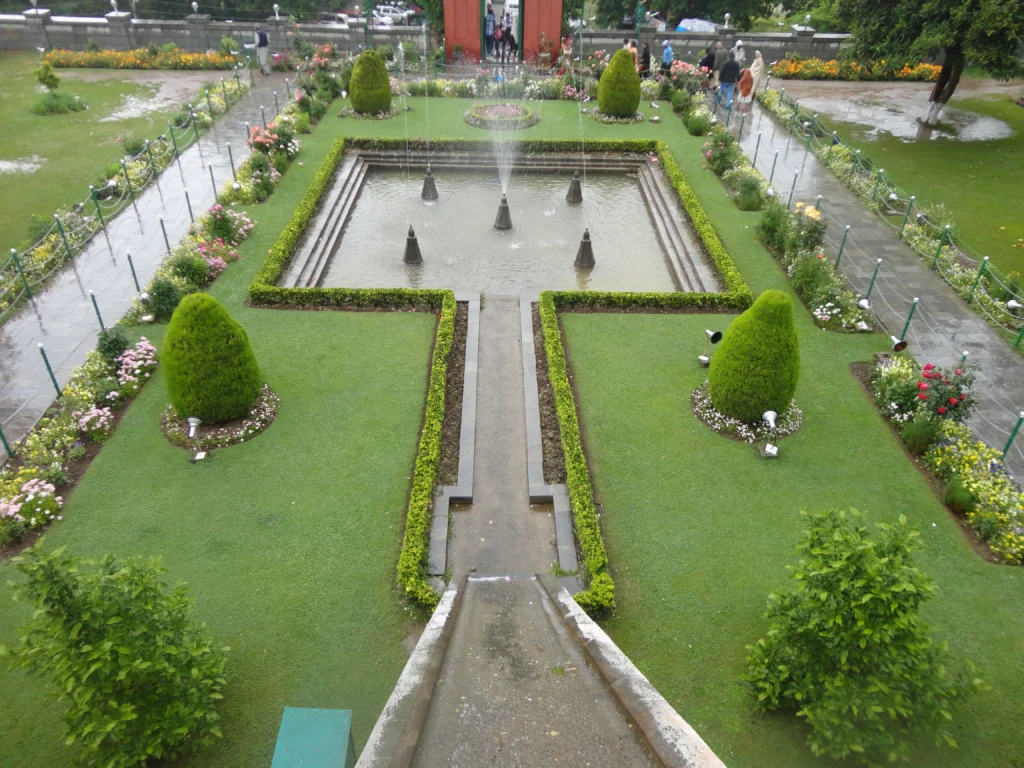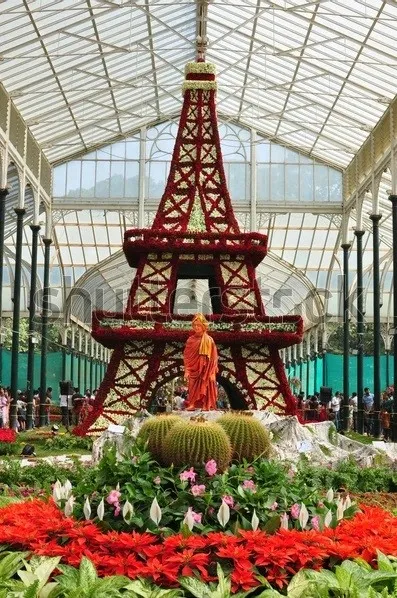If you want to know about the history and development of gardening in india or landscape garden or introduction of landscaping and its role, please click the link.
Gardening in India has a long and rich history that dates back to the Indus Valley Civilization. The planned gardens and tree-lined streets of the Harappa and Mohenjo-Daro settlements are evidence of the importance that gardens held in early Indian society.
- Landscape designing is an art as well as an independent profession, practiced by landscape designers, combining both nature and culture.
- It focuses mainly on two aspects, the landscape planning and the gardening. Gardening has been developed in India through the ages.
- Flowers and gardens are very important part of the life of Indian people, for three main considerations, namely aesthetic, economic and social.
- They have been closely associated with the Indian culture from the Vedic times (3000 – 2000BC).
- The changes in gardening occurred due to the influence of different cultures, religions, various kings and rulers during the early historic periods and in the recent times due to vast knowledge and advances in technology.
1) History and development of gardening in India
- It is believed that the gardening in India is as old as its culture. It is understood that Indians were the first to choose gardening as the proper atmosphere for meditation.
- The origin and history of systematic gardening in India is as old as Indus Valley civilization of Harappa. This is the first recorded history of civilization which existed between 2500 B.C. and 1750 B.C. before the Aryans came.

- The trees were associated with the human life in many ways is quite clear from the seals available of that period.
- Harappan pots were generally decorated with the design of trees.
- This confirms that the trees, climbers, and other ornamental plants were associated with the Harappan civilization.

i) Gardening during Epic era
- Aryans came to India about 1600 B.C. The country at that time was called as “Aryavartha” which means the country of lotus and sunshine because the lakes were studded with lotus flowers and there were wide open spaces. Lotus, being a native India found everywhere.
- The Aryans had aesthetic sense and they appreciated the beauty of flowering plants, lakes, mountains, forests, etc.

- Gardening has been mentioned in classical literature of India.

- The epics of Aryans, the Ramayana and Mahabharata believed to have been written during 500 B.C., mentioned gardens, trees, and flowers. At that time, city was having wide streets, large house, noble palaces and gardens.
- These gardens were planted with trees, flowers and lakes were full of lotuses.
- In Ramayana, it has been mentioned that the palaces had beautiful gardens with numerous flowers and shady plants.
- From the wall paintings, sculptures, and rock-cut temples and from Sanskrit literature, we can get a fairly accurate idea of garden development from the 1st to the 5th century A.D.
- About 57 B.C., the Great poet Kalidas has described the pleasure gardens with beautiful ornamental trees and climbers of that era in number of his books.
- Kalidas, in one of his Drama, has described a machine which is similar to our present-day water sprayers. The concept of a pleasure garden with use of water was fully developed and utilized.
- In the literature, nearly thirty different types of lily ponds have been described.
- Vatsyana (between 300 and 400 A.D.) described four kinds of gardens which were made for the kings, queens, courtiers, and ministers.
- Pramodoyan used to be private garden of the king and the queen.
- Udyan – where the kings passed their leisure time
- Vrikshavatika was the garden for ministers and courtiers where they made merry with courtesans.
- Nandanyan was a special garden dedicated to Lord Indra.
- All these gardens had water pool studded with lotuses and lilies, flowering and fragrance shrubs, trees and climbers.
ii) The development of gardens during Buddhist period
- When we talk about the gardening in Buddhist period, we realized that, the life of Buddha was associated with a number of trees from birth to death.
- Birth place of Buddha has been described by Hiuen Tsang, who visited the place in 630 A.D.
- According to his description, there was a bathing tank filled with clear water, lotus and lilies.
- From about 300 B.C. onwards, the greatest gardens in India were built by Buddhist monks.
- They beautified their monasteries and viharas by planting trees and other flowering plants on a large scale for making surroundings peaceful and ideal for meditation.
- From the point of view of cultural and artistic development, the Mauryan period (322 to 185 B.C.) could be considered as one of the ‘best periods in the history of India.
- King Ashoka (270- 250 B.C.) not only loved trees and parks but gave royal orders to plant trees and develop gardens all over his kingdom.
- King Asoka could also be considered as the Father of road side avenue planting as he was the first king to order planting of road side avenue trees in India. This planting of roadside avenue trees was known as “Margeshuvrika”.
- The art of gardening developed during this time was introduced in neighbouring east countries like Thailand, Korea, China and Japan along with religion.
- During the time of King Somadeva (11th Century) and King Hamira (13th Century) gardening developed into a fine art. The ‘Vanas’ and ‘Ashrams’ gave way to gardens established by kings and nobles.

- According to information about the Chola kings (around the 10th and 11th century A.D.) in South India their cities were well developed with well planned gardens.

- The great South-Indian temples, gems of Indian architecture, usually had water tanks in their compounds with gardens attached to them. Invariably, such gardens were called “Nandanvanum” (heavenly gardens).
iii) The gardens which established during Mogul Era
- The period between the beginnings of the 14th Century to the end of 16th Century showed sudden change in the style of gardening due to the influence of Moghul emperors.
- During the period of Mogul emperors, many gardens were laid out in India and many ornamental plants were introduced from Africa, China, Japan, Europe, and America. The early Islamic gardens in India were designed by Persians and very much resembled the gardens of Iran. Some of the typical features include pools, fountains and canals inside the gardens. They use the term bagh, or bageecha for garden
- The first glorious period of Mogul gardening in India was made by Feroz Shah between 1352 and 1388 AD. The king is best known for his love of gardens. Sultan Feroz Shah developed more than 1200 gardens in and around Ferozabad, which is known as Delhi now.
- Babur was the first Mogul emperor who introduced the gardening techniques in India. He had high aesthetic sense. He built the Ram Bagh and Zora Bagh at Agra. Aram Bagh at Agra is still being maintained beautifully by Archeological Department of India.

- Mogul gardens are built by formal style of gardening.
- This style of Gardening was preserved by Mogul Descendents and many gardens on similar style were made.
- Several modifications like addition of two or more terraces, with a central canal of running water with flowing fountains, water-fall in the form of water sheet and baradari structure, were made.
- The square or rectangular flower beds and trees like cypruss are special features of Mogul gardens.

Broadly, Mogul gardens can be grouped into two categories.
- Pleasure gardens of King and Queen – were made with the sole purpose of pleasure of king, queen, and family members.

- Tomb gardens – were attached to tombs of king or queen for giving peace to dead person

- Akbar was a very popular king and ruled the India very successfully between 1556 and 1605 AD. Gardens at Fathepur Sikri, Sikindra in Agra, Nasim Bagh in Kashmir were established during Akbar’s period.
- Next, to the history and development of Indian gardens, the Mogul king Jahangir (1605 and 1627 AD) contributed a lot. Jahangir along with his garden loving wife Nurjahan, laid out many gardens all over his kingdom.
Famous gardens built by Jahangir at different locations are….
- Shalimar garden at Lahore
- Achabal
- Verinag garden in Kashmir
- I’timad-ud-daula in Agra
- Kushroo bagh at Allahabad
- Lake Palace in Udaipur


- The contributions of Shah Jahan (1628 -1658 AD) to gardening were immense and he built the famous gardens like…
- Shalimar Bagh – Delhi
- Chasma Shahi – Srinagar
- Red Fort garden in Delhi
- Fort garden in Agra
- Tajmahal garden

- The Nishat bagh, one of the most beautiful terrace gardens was constructed on the Dal Lake of Kashmir by Asaf Khan, a minister of Shahjahan.

- Aurangzeb (1658 – 1707AD), laid out a beautiful terrace garden in the plains of India known as the Pinjore garden in Punjab and constructed a beautiful garden in Auranabad.

- Mogul emperors also made several gardens alongwith roads for taking rest during travel from one place to another. Till today, these gardens exhibit their style and enjoy high esteem in the hearts of people.
- They are architecturally superb, aesthetically designed and create a breathtaking sight.
iv) Rajput Gardens (1590 – 1750AD)
- At one time, Rajput gardens in India were famous. Raja Man Singh (1590 – 1695) constructed a large lake with a beautiful garden with three terraces of different shapes in Amber.
Other best known gardens are…
- Palace garden in the city of Jaipur
- Jothpur garden
- Mandore garden
- Deeg garden

v) British Period
- During the 16th Century when British came to India they introduced the styles of gardening of England and continental Europe.
- There was a lot of gardening activity in India done by British people and by Indian kings.

- The oldest Botanical garden in India is Lal Bagh, Bengaluru, which was founded by the King Hyder Ali in 1760AD. With the fall of Tipu Sultan, the garden was taken over by the Britisher.
- In North India, Maharaja Ranjith Singh made an impressive garden at Amritsar.
- Several great gardens were established by the British people in India. They first developed the formal or symmetrical style of gardening.
- As this style became monotonous and then informal style or natural gardens began to develop in 18th century.
- The modern gardens, developed during 19th and 20th Centuries, involved the combinations of the formal and informal styles.
- The important features in English gardens are lawn, rockery, mixed borders of herbaceous perennials, annuals, shrubs, etc

- They have taken effort to improve the gardening in three ways such as….
- Introduction of exotic plants from England and other countries.
- Establishments of botanical gardens
- Compilation of local plants of different regions.
- A number of botanical gardens were established in different parts of India, where exotic plants were introduced, assessed and maintained. The important botanical gardens are
- Royal Agri-horticulture society garden, Kolkata
- Lloyd botanical garden, Darjeeling
- Botanical gardens, Saharanpur
- National botanical garden, Lucknow
- Botanical garden of the Forest Research Institute, Dehradun
- Lal Bagh botanical garden, Bengaluru
- Government botanical garden, Ootacamund
- Botanical garden, Coimbatore
- Bryant park, Kodaikanal
- In these Botanical gardens, valuable plant materials have been planted familywise and labeled. This helped in the preservation of plant materials.

vi) Post-Independence Period
- There have been radical changes in the field of ornamental gardening during Post-Independence period.
- Tremendous achievements have been made in our country in three aspects such as…
- Conscious planning for improving total environment
- Commercial floriculture
- Teaching and research of ornamental horticulture
- Several gardens in different cities have been laid out to provide active and passive recreational facilities and to improve the environment.
- Today’s gardens are deviated from traditional mogul gardens in their layout.
- As a general rule, Landscaping of public and private buildings has become an integral part of planning.
- Departments like Urban development, Archeological, and Tourism are actively involved in improving the total environment of buildings by conscious planning and planting.
- Green belts are provided in industrial towns to reduce air pollution.
- With this, we can conclude the topic history and development of gardening in India.
2) Famous landscape gardens in India
- Apart from the gardens, as mentioned earlier, there are several other beautiful gardens were found in India.
- The forms of gardens that can be found in India are Mauryan gardens, Hindu gardens, Mughal gardens, Rajput gardens and British gardens.

Some of the famous gardens in India are…
i) Brindavan garden
- Brindavan garden is located in the state of Karnataka about 20 km from Mysore.
- The park is adjoined to the Krishnarajasagara dam that is built across the river Kaveri.
- The 60 acres garden is one of the most tourist attractions in India.
- The garden is laid out in 3 terraces which contain water fountains and has topiary works, and pergolas.
- One of the main attractions of this garden is the musical fountain.

ii) Law garden
- Law garden is a public garden located at the heart of the city of Ahmedabad.
- The garden got its names from the Law College that is situated adjoining to this place.
- Innumerable recreational options such as music, theatre and various rides for kids are available here.

iii) Pinjore Gardens
- Pinjore Gardens is also known as Yadavindra Gardens.
- It was built in 17th century and located 20km from Chandigarh.
- This fascinating Mughal garden is a famous picnic spot that features a mini zoo, a Japanese garden, plants nursery, and historic palaces.

iv) Rock garden
- Rock garden in Darjeeling is located 10 km away from Darjeeling.
- The garden was established by the Gorkha Hill Council Tourism Department to attract the tourist.
- The main attraction of the garden is the sitting spaces provided at different levels of the garden that makes it a popular multi-level picnic spot for tourists.

- Another Rock garden is a sculpture garden located in Chandigarh, India.
- It was developed by Nek Chand and was inaugurated in 1976.
- It is completely built of home and industrial waste as well as thrown away items.
- The major aspect of this park is the humanoid figures made of bottles, glasses, bangles, tiles, ceramic pots, and sinks that stand in rows that are placed in walled paths.

v) Shalimar Garden
- Shalimar Garden is located behind Delhi University, just 10 km away from Old Delhi and is one among the significant Mughal gardens.
- This Shalimar garden was built by Emperor Jehangir for his wife Nur Jahan in 1616.
- The garden has four terraces. Some of the major highlights of this garden are the fountains, innumerable variety of flowers and shaded trees.

vi) Mughal garden
- Mughal garden is spread over six hectares of land within the Rashtrapati Bhavan Complex, New Delhi.
- These gardens are a combination of the Mughal style and the British garden style.
- The garden contains multilevel terraces, canals and flowering shrubs along with hedge, lawns and flowerbeds.

vii) Nishat Bagh
- Nishat Bagh is a Mughal garden located on the edge of Dal Lake in Srinagar.
- The garden was designed in 1633 by Asaf Khan.
- The garden offers a great view of the Dal Lake and the snow covered mountains of Pir Panjar ranges. A beautiful water channel flows through the middle of the garden.
- The entire garden is enchanted with its numbers of flower beds, fountains and trees.

viii) Hanging Gardens
- The Hanging Gardens of Mumbai is also known as Pherozeshah Mehta Gardens.
- The garden got its name as it is located on the slope of a hill.
- The entire garden is constructed over three water reservoirs that are pumped to supply drinking water of the whole city.
- Some of the main features of this park are the sunset view over the Arabian Sea, the hedge carved into shapes of different animals and the flower clock.

ix) Jallianwala Bagh
- Jallianwala Bagh is noted for the massacre that took place under British rule on April 13, 1919.
- Later, in 1951, the ground was transformed into a park to commemorate the murder of the demonstrators in this massacre.
- It is located 400 meters north of the Golden Temple, Amritsar.
- At the entrance of the garden, a memorial plaque has been constructed that recounts the history.
- The remnants of the walls of the well on the north side, in which many people tried to escape, are still preserved to display the bullet holes.
- Within the complex of the garden, a Martyr’s Gallery is also present that portrays the awful tale of the massacre.

x) Lal Bagh garden
- Lal Bagh garden is a botanical garden located in Bangalore.
- In 1856, Lal Bagh attained the status of a Government Botanical Garden.
- It is today well-known throughout the world as the centre for scientific study of plants, conservation of plants and botanical artworks.
- Some of the major highlight of this garden is its magnificent glass house, its artistic landscape and the expansive lush lawns with abundance of flowerbeds, lotus pools and fountains.

xi) Lloyd’s Botanical Garden
- Lloyd’s Botanical Garden is situated in Darjeeling in West Bengal.
- It is a distant extension of the Indian Botanical Garden, Kolkata.
- This garden is famous for the wide variety of plant species that are native to the Himalayan hilly region, Sikkim and other neighbouring regions.
- Besides, several other rare and exotic plants are also preserved here. The garden has a separate conservatory of cacti and Succulent section that has around 150 species

xii) Chambal Garden
- Chambal Garden is one of the most beautiful picnic spot in the city of Kota, India.
- It is situated on the banks of the Chambal River.
- The centrepiece of this park is the pond that is stocked with crocodiles.

xiii) Kalindi Kunj Garden
- Kalindi Kunj is a public garden and a popular picnic spot located between Delhi and its neighbouring territories Faridabad and Noida.
- The garden is set along the bank of the river Yamuna. The garden is famous for its musical and colourful fountains.

xiv) Botanical Garden
- Botanical Garden in Ooty is spread over 55 acres of land.
- It houses more than 2000 exotic species of trees and plants from all over the world.
- The garden is preserved by the Horticulture Department of the Government of Tamil Nadu.
- With a wide diversity of plants including different varieties of roses, rare flowering plants, shrubs, and a fossil tree trunk which is believed to be 20 million years old, the garden is favourite among the tourists.

- The Indian Botanical Gardens, also known as ‘The Royal Botanical Garden’ is situated in Howrah near Kolkata.
- The garden is spread over 109 hectares and displays a wide variety of plants and a collection of more than 12,000 specimens.
- One of the major attractions of this garden is the Great Banyan tree that is considered to be one of the largest trees in the world.

xv) Sajjan Niwas Garden
- Gulab Bagh, also known as Sajjan Niwas Garden is one of the most beautiful gardens of Udaipur.
- During 1850’s, Maharana Sajjan Singh took the initiative to build this beautiful garden spread across 100 acres of land.
- It is the largest garden of Rajasthan and renowned for its copious varieties of roses.
- Due to abundance of rose flowers, this garden has got the name Gulab Bagh or Rose Garden.
- It is an amazing park with its assortment of exotic varieties of roses, very rarely found in the land of our country.

xvi) Sim’s Park
- Sim’s Park is the landmark of the second largest hill station Coonoor in Tamil Nadu.
- This is a 12-hectare park, and is also home to an assortment of 1,000 exotic plant species which include tree ferns, pines, magnolia, and some very rare and old trees.

xvii) Bryant Park
- Bryant Park is established in Kodaikanal, Tamil Nadu in an area of 10 hectares, attracts many tourists.

3) Conclusion
- In this Article, we have discussed about the history of landscape gardening, development of gardens through the ages from Harappan civilization to the modern period and the most famous gardens of India.
- It is evident from the discussion that Gardening is always connected with a history of people and their culture, which includes their science, art and literature.
- I hope that, the detailed history of gardening will help you to trace out the development of gardening in India.
- The famous gardens of India, which were built in different period by different rulers, have shown the aesthetic sense, skill and creativity of great Indians.
Today, gardening in India has become a popular hobby, and there is a growing trend towards organic and sustainable gardening. Traditional Indian gardening techniques, such as terrace farming and rainwater harvesting, are also seeing a resurgence as eco-friendly and cost-effective ways of gardening.